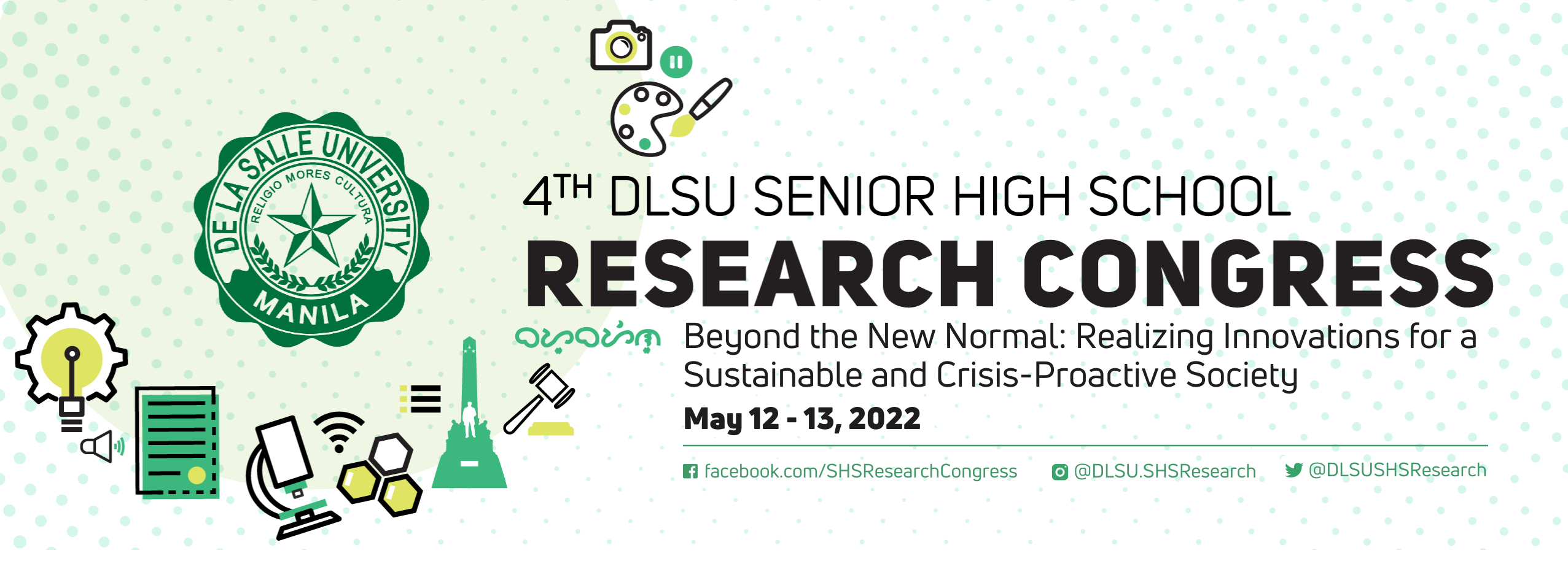Document Types
Arts and Design Research Presentation
Research Advisor (Last Name, First Name, Middle Initial)
Gione Dainelle S. Pagdanganan
Start Date
12-5-2022 1:00 PM
End Date
13-5-2022 12:00 PM
Abstract/Executive Summary
Gayspeak is a queer argot that was formed to shield the Filipino LGBT community back when discrimination was rampant in the Philippines. Today, gayspeak can be observed in the vocabulary of people that are not part of the LGBT community which shows progress in tolerance. Despite this, the fight for queer equality has still not been achieved. This paper explores the adaptation of gayspeak by the mainstream by interviewing non-LGBT users of gayspeak and gathering the perceptions of the LGBT community towards them. The research found that non-LGBT people use gayspeak because of its comedic nature, capacity for socialization, and unawareness of such argot being related to the LGBT community. A representative of a Filipino queer organization states that while gayspeak being used outside of the community is okay when it is not used to continue discrimination, it is sad that gayspeak is being shared with people whose lived experience with said discrimination is different. The artwork combats gayspeak losing connection with the LGBT community by making a gayspeak alphabet using the Letras Y Figuras style. Illustrations based on queer realities were made to represent each letter which allowed queerness to attach itself back to gayspeak.
Keywords
Philippines; gay language; LGBTQIA+; gender; graphic design
Research Theme (for Paper Presentation and Poster Presentation submissions only)
Digital Arts (DA)
AbakaBadaf: Reclamation of Queer Spaces and the Adoption of Gayspeak by the Mainstream
Jaime Hilario Virtual Auditorium 2
Gayspeak is a queer argot that was formed to shield the Filipino LGBT community back when discrimination was rampant in the Philippines. Today, gayspeak can be observed in the vocabulary of people that are not part of the LGBT community which shows progress in tolerance. Despite this, the fight for queer equality has still not been achieved. This paper explores the adaptation of gayspeak by the mainstream by interviewing non-LGBT users of gayspeak and gathering the perceptions of the LGBT community towards them. The research found that non-LGBT people use gayspeak because of its comedic nature, capacity for socialization, and unawareness of such argot being related to the LGBT community. A representative of a Filipino queer organization states that while gayspeak being used outside of the community is okay when it is not used to continue discrimination, it is sad that gayspeak is being shared with people whose lived experience with said discrimination is different. The artwork combats gayspeak losing connection with the LGBT community by making a gayspeak alphabet using the Letras Y Figuras style. Illustrations based on queer realities were made to represent each letter which allowed queerness to attach itself back to gayspeak.


